The usefulness of maps and waymarkers
On finding your way back
The first time Husband and I went to the forest, we skirted it. We went all the way across the rough brush field to the edge of the darkness, which became less dark the closer we got. Mouths agape, we stood looking at the wall of tall trees in front of us.
“Oh, wow!” we said, repeatedly.
We flirted with the possibility of going in. Who knew what lay beyond?
We stepped over that threshold — off the lumpy tilled winter soil, through the heavier brush — and went two or three paces into the woods. The silence was more like a thick depth of sound than an absence of sound, as if we had stepped into a padded room. Sounds did not enter from outside. Only the forest was audible, as if we were encapsulated in an invisible felt bubble along with a thousand mute creatures. No one was making a ruckus.
Our voices, our own sounds, our footsteps, all were absorbed by the thickness of the woods. We were in awe. In awe, and somewhat unsure of where all this depth might lead.
We stepped back out into the winter field with its bright winter sun and jagged dried stalks jutting abruptly, askew, out of the hard lumpy ground. We were more at ease there, more sure of our bearings and footing. The elements were known to us, the way home lay straight ahead, toward the church steeple: over the rise and past the hunting blind, and we would meet up with the path that edges the neighbour’s winter wheat field.
We took lots of pictures during those first exploratory days. The way the light played on the field or lit up the far forest edge, the decaying mossy wood — every detail and perspective was new, and we wanted to capture it.
We really went into the forest for the first time on New Year’s Day. It was unseasonably warm — something crazy, like 15 degrees Celsius — and the sky was a bright blue, crisscrossed like a tartan with the white trajectories of airplanes. We marveled at the grid-worked sky and wondered at where so many planes could be headed on New Year’s Day. We were quite happy where we were.
Conveniently, we discovered a well maintained path. We squeezed past the gate and then wandered down the “entrance hallway” looking up at the canopy like a couple of street urchins stumbling into the grand hall of a palace. Shortly, it ended in a T, and we were forced to consider our options. Left or right? Would we get lost? Should we go back?
We marveled briefly, and then figured it was bet to turn back. You could say we were easing our way into it.
We went back to the forest again, the very next day, and ventured farther in. We oh-so-casually said things like, “OK, so at this junction with the big tree, should we go straight?” Over and over, I mentally walked myself through our previous steps, like a game of memory (left at the T, right at the first main turn, up the hill, left and then straight past the big tree to the dip) and tried to visualize a map of our trajectory.
There are no signposts in the forest — at least none of the traditional kind. Nothing that says Vése, 5 km with an arrow pointing in one direction and Nemesvid 1.5 km with the arrow pointing in the other.
Once you have grown accustomed to relying on certain types of signs, being without them is disorienting.
Sign posts take on a new identity in the wild. They come in different flavors, wear different disguises. They look like bright flowers, fallen tree trunks, water pits and changing vegetation, but they’ll work just the same, if you let them.
In the forest, the cardinal points are well obscured. Light, like sound, seems to come from everywhere and nowhere all at once. Impossible to know where the sun is and your location under it. Instead, it is trees and caws, and furtive glances to check your position in relation to the path — or to where the path was last you looked. It, too, is a shifting creature. When was it you last got your bearings? How long has it been? Time slips away between the trees, scurries like spiders and centipedes under the layered leaves into the damp darkness. Impossible to know. The forest is timeless and forever changing. Now you are 21, now you are 48 — like that. It’s been 46 minutes, it’s been 3 hours — and the dogs are trying to lead you home.
I’ve left my own waymarkers on occasion, slouching my apple red or sky blue mushroom bag against a tree trunk to point my way back to the path. Turn right at the first cross-section, keep going past the failed first relationship and turn right again at single-parenthood-with-a-vindictive-ex. Follow the path up the incline and over the crest of the hill, where you can see the next crossroads ahead, with the hunting blind one way, and the low, overgrown and boggy path the other. Forward or back? Future or past?
By now, though, I know the path like I know the floorplan of my own home: the entrance hallway; the T; the first bend at the red pines; the crossroads where, to the left, there was the deathcap (deadly!), and to the right, the deadman’s trumpets (delicious!); the dips and water pits; the sections of white brick; the chanterelle spot with the strange tree and the bend that comes after it, with its slow incline up to mushroom corner and the crossroads just beyond where there is now the oyster stump; and then, if we go to the right where the trees are not as tall or dense and there’s a little more sunlight, there’s the reishi tree — and on it goes, seemingly forever. We’re pretty sure it would take us all the way to Nemesdéd but we haven’t tested it. We’ve not yet reached the end of the forest.
From time to time, we explore a little farther, map out other offshoots from the main path to see what there is to see, to see where it will lead us. And then we pencil those in on our mental maps of known and unknown. These days, I travel the path less often, preferring to shuffle through the leaf litter alongside it, this parallel route of stepping over fallen logs and around tree stumps. crouching and poking, erratically waving my “spiderweb defense” stick in front of me.
So much is undertaken in an effort to not get lost, to find the way back.
Finding your way out of the forest depends on the little things, depends on being able to reduce the moment and scope of your vision to the ground immediately in front of you, where you will tentatively, rather than confidently, place your foot.
The ground might be slick or bumpy. All manner of rocks, holes, branches, and spiderwebs can trip you up. You must focus on the next step, on your footing. The moment you are distracted by a flash of colour in the trees is the moment your foot will land in a deep puddle or fly out from under you in the mud.
Will you find your way out of the forest, out to the fields? Will you emerge into that known expanse, that blend of land and sky, where you can pretend that nothing (certainly no threat) exists above or below the horizon, where your footing is sure and your vision is wide and clear?
And what will you find along the way?
Fog rarely makes its way into the forest. It prefers, rather, to lurk in the fields, in the lowlands, in the humidity soaked depressions and broad open fields, gathering and thickening into a damp hue for hours before stealthily dissipating whence it came.
These mist covered mountains
Are a home now for me
But my home is the lowlands
And always will be
Some day you'll return to
Your valleys and your farms
And you'll no longer burn
To be brothers in arms
JBP has written and spoken at length about not hiding things in the fog.
34. Do not hide unwanted things in the fog. There will be times in your life when it will take everything you have to face what is in front of you instead of hiding away from a truth so terrible that the only thing worse is the falsehood you long to replace it with.
But this quote doesn’t do the power of the idea justice. Listening to the podcasts of his talks (from 6:45), I always vividly imagined walking aimlessly around in a pitch black landscape and stumbling into obstacles, bashing my shins into stumps, tripping on roots, and falling into pits — all of my own doing.
“There’s not a better strategy than to seek out the dragon in its den,” and nothing most people would rather avoid.
So we walk into the forest, where there are no real dragons, and we pretend.
Late fall, early winter in Somogy Megye is all fog all the time. The fog and the dew accumulate like rain, leaving every surface slick and soaked by morning. The drive to take Daughter to school is a magical fairytale trek skirting deep dark woods, soft rolling hills, and obscured distances and the promise of all manner of threat and adventure. The land becomes a pale dreamscape in shades of blue-green-grey, a hazy vision of what lies beyond.
The tarmac reveals itself slowly, only a few meters ahead at a time, forcing you to bring your focus lower, your circle closer. Although the route is laid our for you, with white lines and road signs, your next move is constantly in the immediate short term, and you must keep your reflexes honed.
Soon, Daughter and I will be headed home for the first time in 18 months — very soon, in days, we will land in Montreal. The countdown has been going for several weeks now in Daughter’s notebook; each day diligently checked off, the old total crossed out, and the new total written on the next line. We’re at 6 days. Tomorrow will be 5. Before we know it, we will be counting in minutes, racing through the transfer at Zurich, and walking rubbery and exhauster through the home gate — before doing it all again in reverse.
I feel I’m going back without a compass.
The waymarkers are there, just exactly where I left them, but the meanings have changed. The signs no longer point this way home and that way abroad — the distinction is no longer clear. Where is home, exactly?
Is it here or is it there? And once I’m over there, will my cardinal points become all turned around? I’m writing this from Hungary, from the large armchair that came with the house (there are also a matching oversized loveseat and sofa), the one I sit in most of the time. Like the three bears, we each have our preferred seat, and this armchair is mine. Aside from a few other “original” items left behind by the previous owners, we live in a home we have created for ourselves, to our liking. This house is home to me now, the way you grow accustomed to any space you inhabit regularly. In the dark, the bathroom light switch rises to meet my hand and the hulking shadows of the furniture are exactly where I expect them to be. There are no surprises, no obstacles.
Not that long ago, this — the house, our neighbours, our pets, our belongings, all of it — was unknown to us, and that is a hard thing to imagine now.
How will it all look from across the ocean? Will I find my way back to Canada? Will I recognize the waymarkers I’ve left myself? And if when I get there, what will I find? Will I still find home?
And, when it’s time, will I be able to make my way back here again?
I’ve taken to leaving my “spider defense” stick at the entrance to the forest, propped at the base of that large moss-covered tree. It’s convenience, really — I don’t have to carry it with me the whole way back home and I don’t have to remember to bring it the next time I head out. It’s there, at the gates, waiting for my next adventure.
No one else knows about it or uses it — after all, it’s a pretty innocuous broken branch among a forest of broken branches — and so it waits for me: a navigational tool, a good luck charm, a talisman for warding off those unexpected things that will leap out at me from the depths of the forest.
Knowing the path and my way as I may, there are always surprises — often in the shape of an unseen spider web spanning the distance between two trees just exactly at the height of my face. And so, I wave my stick up and down in front of me, while shuffling slowly forward, watching the ground for mushrooms. And when I leave the forest, I leave it propped against the tree for the next time.
It’s a thread to tug on, a reminder, I suppose, about the fragility of lives lived across distances, about how we weave connections and break them, and all the ways we might map out our paths and find our way back.


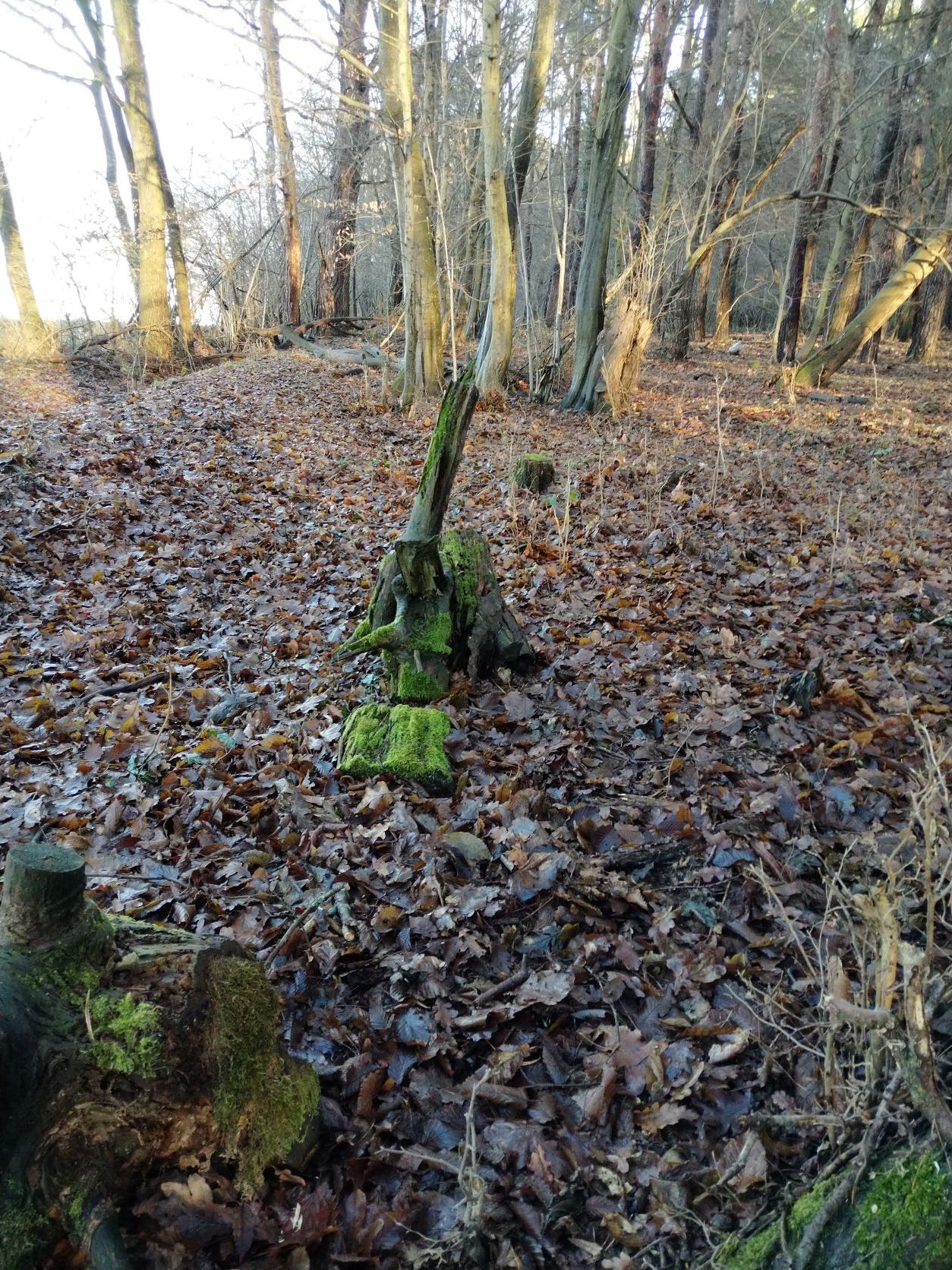
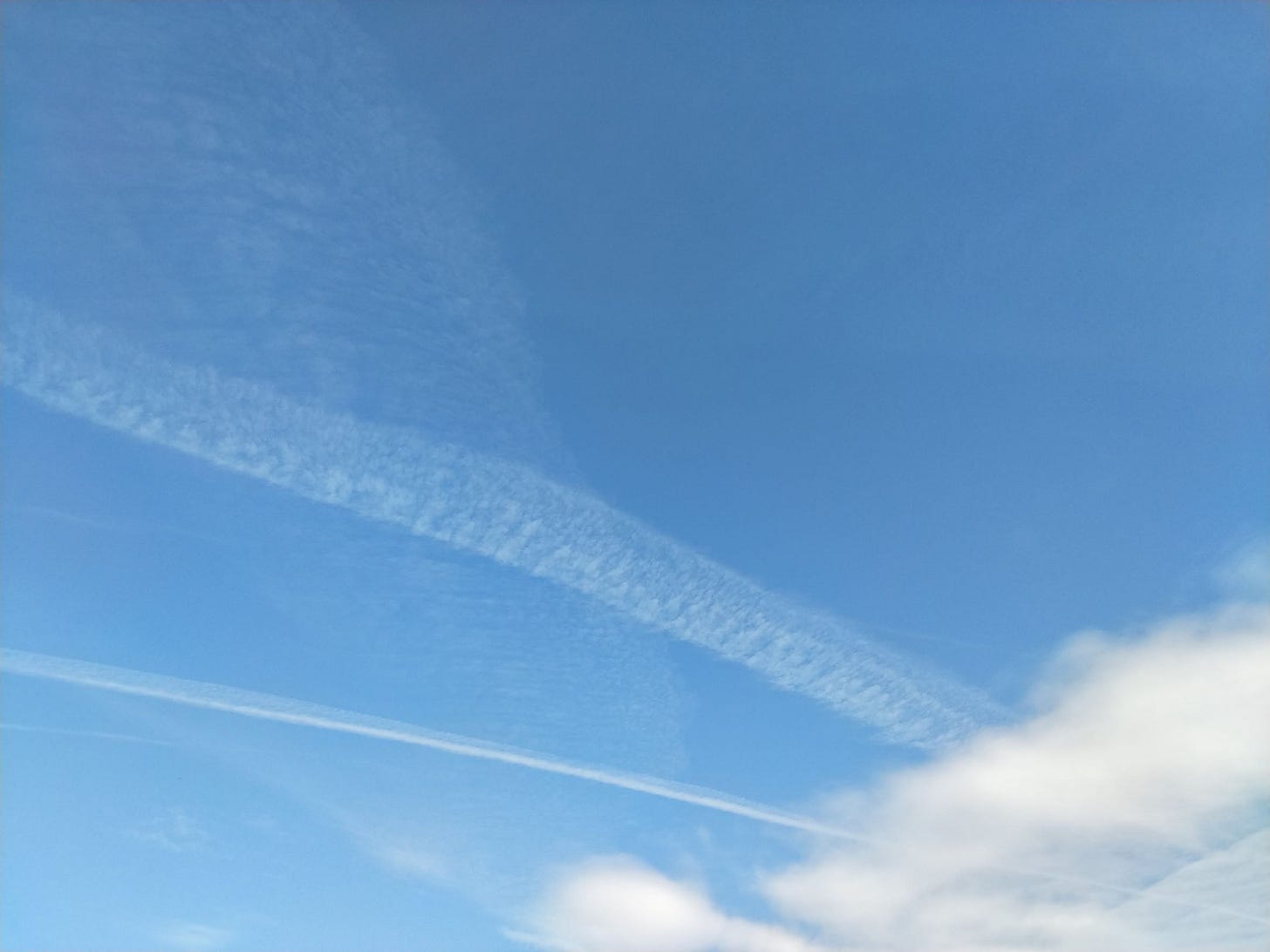

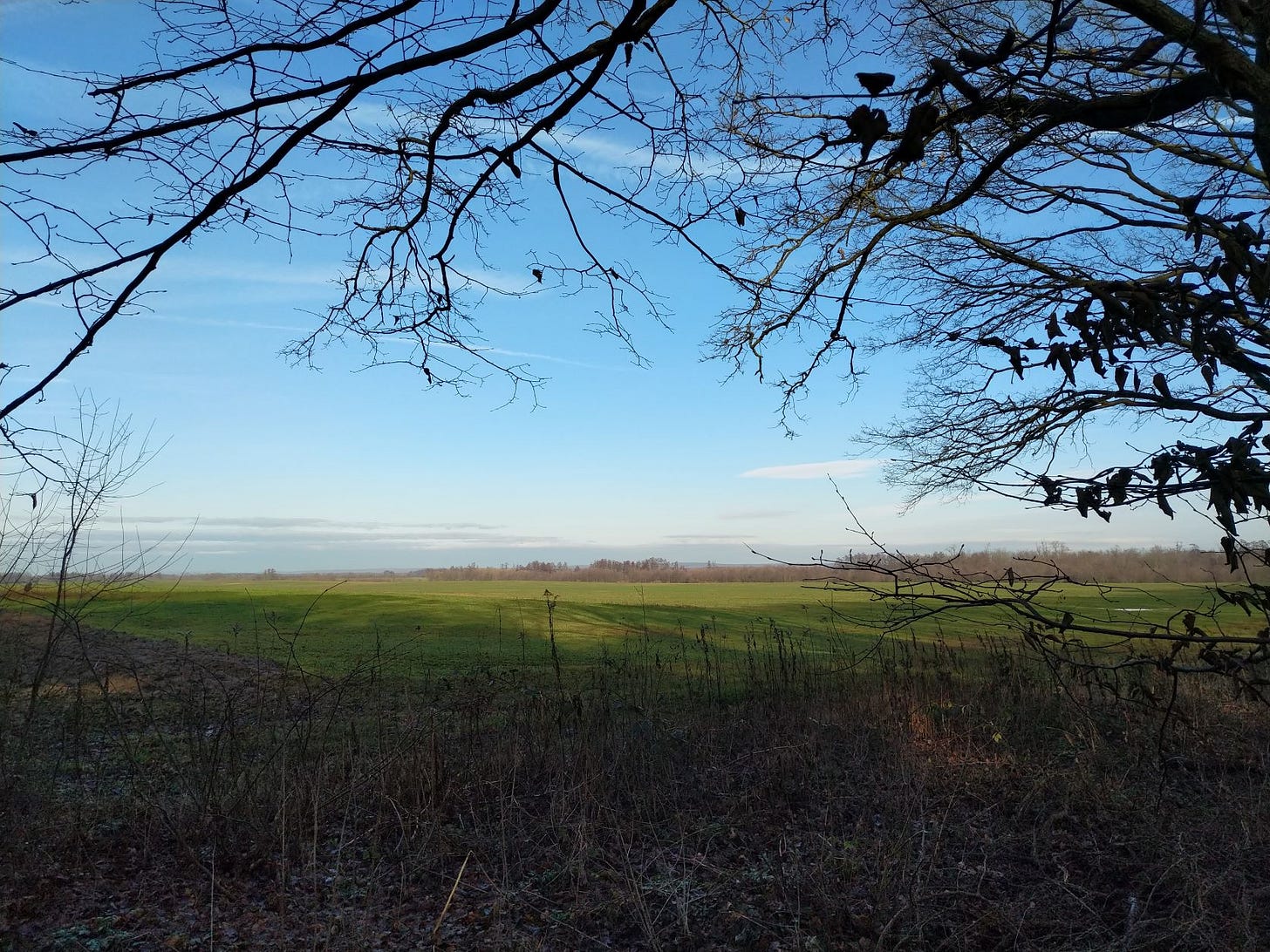
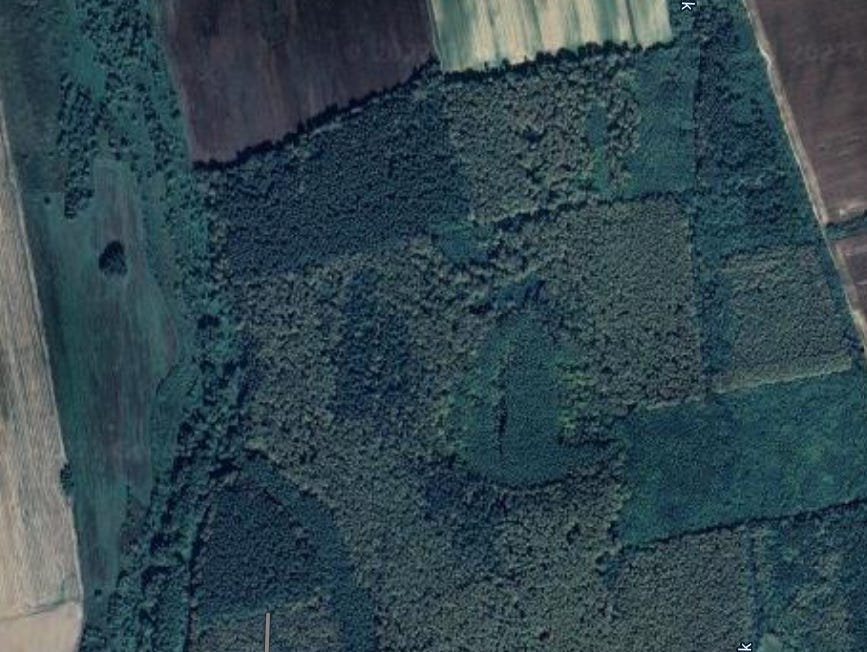
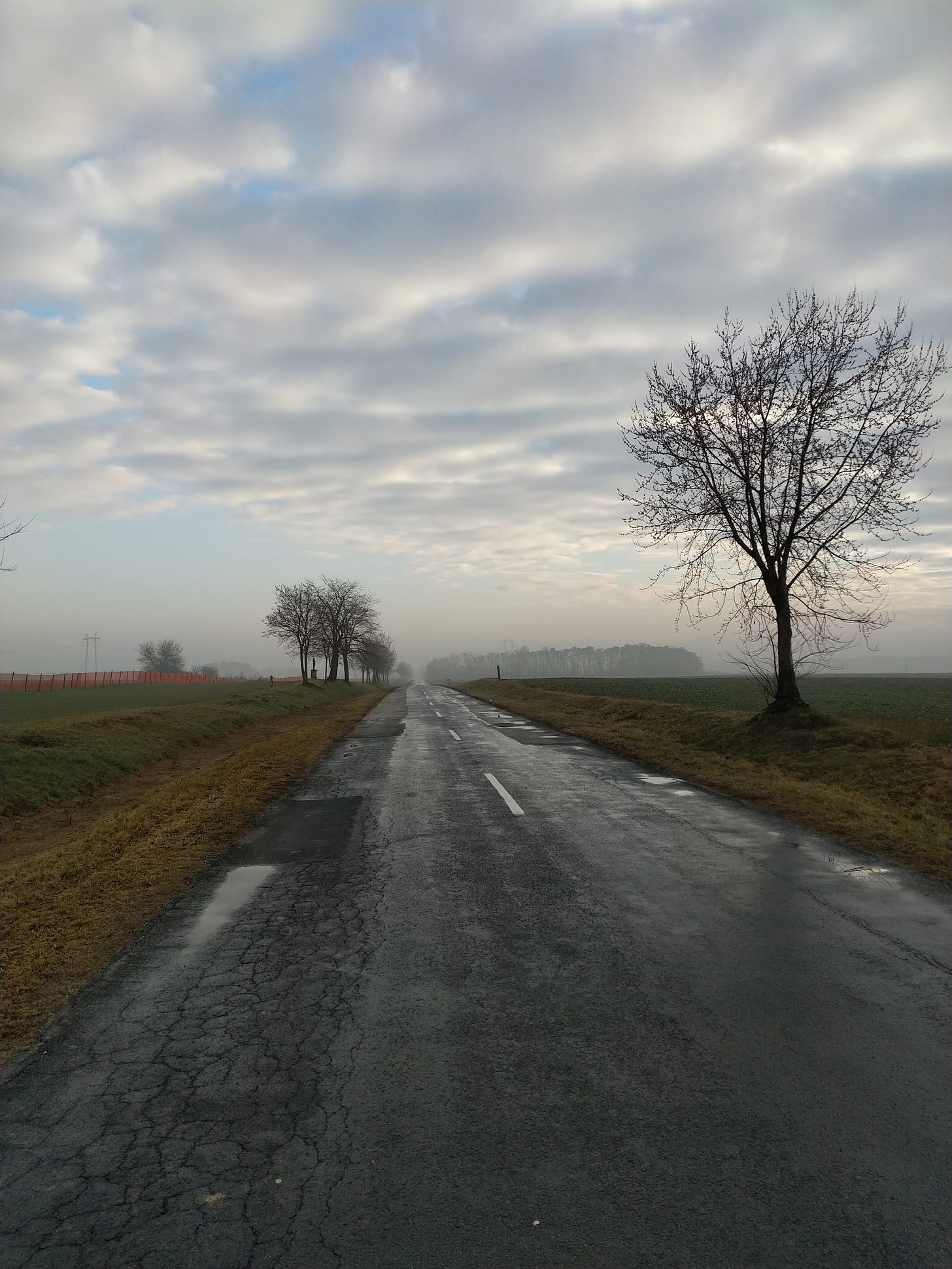

Oh, dear me! This one, too, got tears welling up. It is so good.
Sometimes as I read, I feel I must be the writer because the thoughts and details and habits you describe are exactly ... me. Right down to the spider stick, and paying attention to where you walk,...
I love it. And the metaphors are delicious and savoury.
Thank you.
This one is very deep and, for me, requires a second or even third reading so that I can fully appreciate your meaning.
I'm always amazed at your range of writing styles! Thanks for inspiring my own reflections.